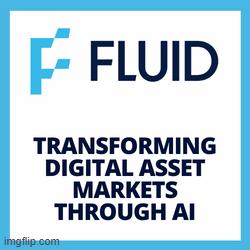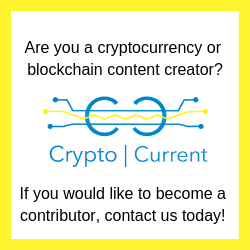Randall Pires on Creating Passive Income by Helping to Build Infrastructure Utilizing Emrit (Episode 197)
Creating Crypto Passive Income
We have a keynote from MCEX from Randall Pires on creating crypto passive income by helping to build infrastructure utilizing Emrit.
Since graduating from Georgia Tech with an engineering degree in ’07, his next 10 years were spent working internationally, mostly in Africa. His career started as a project engineer building the largest LNG plant in the world. Afterward, Randall started his own Wireless ISP company & had internet coverage for 100s of thousands of users across 4 times zones in Africa, from Angola to South Sudan. After the Civil War relapse in South Sudan, he has been focused on blockchain technologies, empowering the individual with access to information (Internet 1.0), and access to Value Exchange (Internet 2.0). Randall is an international speaker sharing visions of Society 5.0.
Also Read:
OpenSea valued at over $1.5B after $100M Raise
Emrit is an emerging internet technology company that builds and manages a global peer-to-peer wireless IoT sensors network by using Helium hotspots for coverage and LoRaWAN protocol for connectivity. This network is a secure and cost-effective way for low-power Internet of Things devices to send data to and from the internet. At Emrit, we are on a mission to create the largest network of Helium Hotspots, cultivating a community of advanced operators and users. With your help, we can expand #ThePeoplesNetwork across the globe.
Our network is forming the basis of LoRaWAN IoT capabilities saving everyone immense sums of money and propelling our society forward in new and exciting ways. As the largest distributor and owner, operator of Helium Hotspots, our hope at Emrit is to be able to have the most optimized contributing hotspots, as well as be the go-to co-developing partner with Helium for the community.
To thank you for your adoption, we would like to reward you with a FREE hotspot (one per street address, 300 meters apart), FREE shipping (within USA/CAN), 100 HNT tokens for activation, and ongoing REVENUE SHARE (15% of the Hotspot’s earning as long as the hotspot is running with you). We also have referral programs in place. Essentially, these rewards are a ‘thank you for using the FREE provided Hotspots which help us achieve our vision of a more connected future, powering the IoT future, with you!
Links
Use our link to get your free CoolSpot to start earning $25 a month: https://www.emrit.io/?referral=cryptocurrent
https://twitter.com/_sage_randall
The following transcript was created using artificial intelligence. There will be some grammatical errors below.
00:00:08:18 – 00:00:25:29
Randall Pires: So, who here studies more than like, 10 hours of IoT, hundred hours of IoT? Okay, thousands of hours? Okay, Blockchain, who knows what Blockchain is? Okay. Over 10 hours of studying, over 100 hours of studying, over 1,000 hours studying. Okay, good.
00:00:26:12 – 00:00:37:12
Randall Pires: Who here works in government? Anybody? Does anybody work in a business that services the government? Alright, alright, alright, cool. So, I got a fine presentation for you.
00:00:37:16 – 00:01:16:22
Randall Pires: One more question, who here likes free money? Okay, so this is the craziest business ever, because that’s exactly what we do. We literally give you devices and hardware that makes free money and it expands the coverage for IoT. You want a smart city, you use our hardware, you want some smart home and devices, use our hardware. Actually then you get paid, right? And the tricky part is Alexa, Google, these other ones. It’s all about privacy, right? I don’t have smart stuff in my house with Alexa Google because of that.
00:01:17:02 – 00:01:43:12
Randall Pires: So, thanks for letting me know a little bit about you. I’m going to jump into a little bit about me and then we’ll talk about how we can work together. I’m going to try and condense about 10,000 years of human experience into about 30 minutes, so, bear with me. There’s a lot of slides. We’re going to go quick, but I think you all are up for it and I think you can keep up. So, slide.
00:01:47:10 – 00:02:12:12
Randall Pires: Alright, that’s me, Georgia Tech engineer, next slide. What have I been up to? So, that brought me to the mouth of the Congo River in Angola, Africa, right? Was building the world’s largest LNG plant, $12 billion right there. If you look at that edge, that’s seven kilometers by two kilometers, and if you think of like the Florida marshlands, we raised it up two meters and then we built that on top, $12 billion.
00:02:12:27 – 00:03:00:08
Randall Pires: I was part of the mobilization team, first 100 people there. My job was to prepare for 10,000 other people to show up and build that over four years. Next slide. So, out of that in Africa, next slide. Out of that in Africa, out of necessity, we were in a place that had very little communications, right? You’re in the middle of nowhere. It took me four days of one way travel to get there and four days back, eight days over a week just to get there and back on airplanes. And where we were was so remote that there was barely any Internet. There was pretty much a duopoly in the country and you only had either or service. And they didn’t care because you had to buy their stuff, right?
00:03:00:16 – 00:03:56:29
Randall Pires: So, when we’re doing a, you know, our project was $750,000,000 on our two civil engineering teams. And so, if we’re down for a day of projects and we’re not getting an updated report on what we should be doing, that’s like hundreds of thousands of dollars a day lost. So, when the other people started to show up on the job site, then these dishes started to show up. I’m a friendly guy, so, I was like, Hey, neighbor, what’s up? What’s with this dish? And they’re like, Oh, that’s the Internet, it gives us the Internet and it pretty much never fails. And if it’s raining, if it’s cloudy, you’ll always have the Internet. And I was like, Cool. So, I go back to my project manager, I’m like, Hey, project manager, we got, oh, I didn’t turn it on now, so. There’s an Internet solution for this, and the project manager’s, like, Great, go figure it out, I was like, What? No idea about this, right?
00:03:57:01 – 00:04:26:06
Randall Pires: So, then I learned about the Internet and I became the Internet guy in Africa for like the next seven years, right? I started my own ISP, I covered Africa for like four different time zones. Last country went into civil war. Well, let’s go to the next slide. Okay, so then after the civil war, which was South Sudan, I was like, Okay, I just lost my 20s, all of my money, all of my work, I didn’t save anything, just kept putting it back in the business. Yeah, let’s just grow the business and then gone. Everything gone.
00:04:26:08 – 00:05:04:21
Randall Pires: So, I was like, Alright, let me take some time off, let me come back to the US and let me start over, right? That’s when I went into Blockchain, like, full time. I’ve been in since 2014, right? As a passive observer. Oh, that’s cool technology, let’s see what’s going on here. And then, when it went above the price of gold and stabilized at $1,000 a Q or ounce, then I was like, Okay, now it’s time the rest of the market is waking up, something’s, you know, being activated with Bitcoin. That was like January, February of 2017, that point, six weeks, 18 hour days. All I do is eat, sleep, consume everything, read everything, watch everything on Blockchain and Bitcoin.
00:05:05:02 – 00:05:25:17
Randall Pires: And I was like, Alright, this is it. Then I did that pretty much until now, like full time. So, one of my favorite projects was Helium. And there was this kid I was trying to find online. It’s like, Hey, power patron helium. Who here’s heard about Helium? Okay, nice, I like that.
00:05:26:04 – 00:06:02:24
Randall Pires: So, there was a power patron, the first person to buy in bulk these Helium miners, right? I’ll get into this in a little bit. And his name was Adya Rule. I found him on LinkedIn, but I couldn’t get in touch with him. So, I’m from Atlanta and the Blockchain community there is, you know, a pretty tight knit. And so, I was meeting this person who raised $200,000,000, a venture capital fund for algorithm Blockchain. Now it’s called Borderless Capital. They’re actually about to open up an office here in Miami.
00:06:03:07 – 00:06:32:27
Randall Pires: And so, I was meeting up with him, catching up, Hey, congratulations on your fund and he mentioned Helium. And I was like, Oh, I love Helium. And then I just went off for like 30 minutes, started talking about Helium. I was like, I’m trying to find this kid, though, he’s in Atlanta somewhere and he’s like the number one miner of Helium. I was like, I really wanted to meet him. He’s like, Oh, that’s my son. I was like, Okay, cool. I was like, Well, what are you guys doing with that? He’s like, Yeah, actually we’re pretty much maxed out on friends and family, you know. I was like, Well, you need some help with that? He’s like, Yeah.
00:06:32:29 – 00:07:31:08
Randall Pires: So, I’m co-founder of Emrit with that guy, Adya Rule, 11 years old when he started, now he’s 13 and a millionaire, right? So, basically, he started off with doing chores, took the money, put it into last bull cycle Ethereum mining turned his, you know, thousands of dollars, a few thousand dollars into like six figures as like, I think a nine or 10 year old and then took half of that and made a big bet on Helium. And at that point, he was the first one to make a big bet on Helium. Helium is a proprietary built Blockchain. It’s not a copy, it’s not a fork, it is purpose built just for one thing and one thing only, which is covering the world with a IoT network and different wireless protocols, right?
00:07:31:24 – 00:08:28:25
Randall Pires: And so, who here remembers Napster? Yeah, peer-to-peer file sharing. The technological genius behind Napster was the guy that came up with Helium in 2013, right? So now, here we are eight years later, they spent six years developing the software, then in 2019, they gave us the hardware and then this kid was the one that bought in bulk the most of that hardware. Now, we’re the number one miner in the world of Helium hardware and what’s crazy is we give you the miners for free, right? Less than five watts of energy consumption. If you can plug in an IKEA led light bulb, it’s less than that, right? And then, so not energy intensive and then, also less than five kilobits a second of bandwidth. So, not very much bandwidth consumption either.
00:08:29:01 – 00:08:51:16
Randall Pires: So, literally, it’s like Hi, you know, go to Emrit.io, sign up, and then we will send you a box that makes you free money. What’s crazy is it just went 1,000X in the last year, right? When I was mining, Cool, we’re making a bunch of tokens, 15 cents, awesome. Now, it’s like 15 bucks. So, that gets shared with you guys. You guys get 20 percent revenue.
00:08:51:18 – 00:09:15:02
Randall Pires: I’m going to now walk through the importance of what we’re doing, not the money part, right? Not the money part. I want to walk through as humans, as civilization, why this is important, how this plays into the bigger picture of things, of what’s happening and what’s coming. So, what have I’ve been up to? Emrit and then, also the Government Blockchain Association.
00:09:15:24 – 00:09:40:18
Randall Pires: So actually, 2017, I started the Miami chapter with that guy over there, Silvio Pupo. If you have any questions about government and Blockchain and how they intersect in technologies, yeah, guy in the blue shirt. He’s the president of the Miami chapter, very active. And what I’m going to be sharing is like, how do you have free infrastructure that pays for itself. Next slide.
00:09:42:01 – 00:09:59:19
Randall Pires: So, these are all the different working groups, there’s like over 50, all the different ways that government and Blockchain can intersect. It’s a nonprofit. If you’re a government worker, which nobody raised their hand earlier than you get free entry. Otherwise, it’s a nonprofit membership organization. Next slide.
00:10:01:05 – 00:10:32:20
Randall Pires: So, this, I just took this screenshot a little bit earlier, in one year we went basically from 1,000 hotspots, this is the whole network, not just ours, we went from one thousand hotspots to almost 30,000. We’ll probably hit 100,000 by the end of the year. And we’re in the US, Canada, Mexico, Europe and Australia and China. Okay, so this is actually what I’m here to talk about. So, I like maps, so, I’m going to share with you one of my favorite maps.
00:10:33:04 – 00:10:47:19
Randall Pires: And we’re missing a circle, or not actually a circle. All the rest of this, outside of the circle is like nothingness, right? Nothingness. Then we go consciousness, sound, right? Light, matter.
00:10:47:27 – 00:11:10:03
Randall Pires: If you go to the Bible, God said, “Let there be light.” He had the idea, He said something, light, right? Then the universe, galaxy, well, light slowed down as matter, then we have universe, galaxy, solar system, earth, human. We’re going to be talking about the human level, right? But we’re also going to be connecting how this goes back to the other levels on a type one civilization.
00:11:10:05 – 00:11:41:23
Randall Pires: Has anybody ever heard of Kardashev’s scale and type one civilization? Alright, you three. Okay, next slide. Cool, so, I’m going to go through this very quickly. This is the 10,000 years of human experience that we’re going to run through just to kind of put it in contextual framework, because most often we don’t, you know, think typically beyond our own lives or next generations or definitely not multiple generations or when we’re dead, what’s going to happen, but that’s normally where I like to think about.
00:11:42:02 – 00:12:08:23
Randall Pires: So, over the last 10,000 years, we’re basically at Society 4.0. I’ll go to this real quick, next slide. So, in the beginning, okay, actually that one if you want to take a picture, that’s a good slide. If not, I’ll give you like two, three more seconds. Okay, one more.
00:12:10:06 – 00:12:27:29
Randall Pires: Okay, so let’s go to the next slide. So, basically, in the beginning, right? We’re chasing our food, right? We’re chasing our energy. It’s not here, it’s not predictable, we’ve got to go around, pick it up. We’ve got to go kill stuff, we’ve got to go forage, right?
00:12:28:09 – 00:13:43:17
Randall Pires: And then, next society, we were like, Oh, hey, I can stick my energy here and I can predictably make all my energy consumption in one place. And that’s when we got into like, farming, agrarian society. Then we’re like, Hey, now I can actually take my energy and optimize it and make it way more efficient and then I can put less time in, but I get more energy back of my resources, right? But the tricky part is, is every society that solved the problems of the previous society created solutions that aren’t going to be solved by its own society. That’s why the next revolution comes behind and solves it for it, right? In the very beginning, this is just a fun story, in the very beginning, UK was actually ahead of America as far as like, automobile production, but they put in regulations and laws that said, “Hey, you need three parties to drive your car, you need a flag bearer to walk in front of it, you need an engineer to drive it.” And then, I guess the passenger and the speed limit was only four miles an hour, right? So, that’s why the UK didn’t progress. But then we’re like, Hey, mass production, model T Ford, right? Iterate, iterate, iterate.
00:13:44:05 – 00:14:16:19
Randall Pires: And the old technology was built on or the new technology was built on the old infrastructure of the old technology. This is just a quick thing that we got really good at, really good at mass production. The Society 3.0, Industry Society, but, you know, we have so much waste. We actually produce enough food for 12 billion people, but still, there’s billions of people that go hungry, right? And so, that’s just a quick slide, right?
00:14:16:21 – 00:14:45:08
Randall Pires: How do we get more efficient? Well, the same society that creates the same consciousness level that creates the problem isn’t the one that’s going to be the one that solves it. So, right? That’s what Einstein said. So, we have to raise our consciousness, we have to raise our thinking and hopefully that’s what our future generations do, right? We hope they’re smarter than us, if not, we’re going to die. Next slide.
00:14:45:10 – 00:15:25:08
Randall Pires: So, Society 4.0, Information Society, Hey, we know how to do industrial mass production and Well, man, let’s make these little machines that can make decisions and think better than us and patterns and data and things like this, right? So, this was the beginning back in, you know, last century, 100 years ago. And then now we have the first Internet, right? The first Internet is the Internet of data storage. Information storage retrieval and moving the data around, that’s Internet one. Internet two is Blockchain. Next slide.
00:15:27:10 – 00:16:22:12
Randall Pires: Okay, I’ll get back to Blockchain. So, this is actually where my company focuses, is this Internet of things, right? Well, I want convenience, I want data, I want these sensors, right? Why do I need to walk over there and check on something? Why can’t that just give me the data feedback, right? In places that are hard for humans to get to, places that are inhospitable, places you only need to check maybe once a year. Why not just put a sensor there, right? And I’m going to go over why our company is really helping this because the biggest barrier to why we don’t have super smart society, super smart cities right now is who’s going to pay for it, right? The infrastructure cost, who’s paying for that? Well, we do, right? And we’re going to give you something that makes you money. It’s a no brainer.
00:16:22:20 – 00:16:54:00
Randall Pires: Okay, so, this is what’s happening in the next, well, I guess we’re supposed to be there now at 50 billion devices, but that’s the trajectory, right? So, just the main thing is to look at the acceleration of the curve. That’s what we’re following, right? And the tricky part is that all of the incumbent systems right now with all these devices, right? Are having to pay for the infrastructure. They’re having to pay for the, you know, the towers to go up all the devices.
00:16:54:05 – 00:17:19:27
Randall Pires: If you wanted ubiquitous coverage in the United States for like, IoT, working on the same radio technology that we work on, we’re talking about like, tens and tens of billions of dollars. But then they’re not going to get the money back for so long, so they didn’t build it, right? So, they’re sitting on it, right? Next slide. So, these are the main categories, right? Smart homes, wearables, smart cities. That’s the one I’m most interested in.
00:17:20:02 – 00:17:33:15
Randall Pires: Anybody that wants to talk about government infrastructure, please, I want a trophy project. That would be one. And then, you have all these other categories, right? And so, just more sensors, more data. Next slide.
00:17:34:09 – 00:17:53:06
Randall Pires: And this is how IBM thinks of it. Real quick, you know. Device, cloud, global network, local network, and then all these things. Alright, next slide. So, here’s the tricky part, is that so many slides create so much data, right?
00:17:53:09 – 00:18:36:08
Randall Pires: My level is on the data creation level. Then after that, that’s where you get into machine learning, deep learning, AI. We need machines to process this kind of stuff. Next. Okay, here’s one of my favorite slides to be kind of aware of is the number of patents filed for artificial intelligence, deep learning, machine learning, right? The US has been dominant up until around 2015. And then after that, China just took off. You see the growth curve, right? That’s the thing to be worried about, right?
00:18:36:10 – 00:18:56:13
Randall Pires: They’re cranking out over 2,000 AI Ph.D. students a year, maybe 5,000, something like that, ridiculous amount of number. And the other thing as well as with AI, the data is how fast you can grow your AI. Well, who creates the most data right now? That’s China, because they’ve got a bunch of people, right? We don’t have that many people. Alright, next one.
00:18:59:29 – 00:19:36:00
Randall Pires: Who recognizes her? Yeah, Sophia. Okay, so, next slide. The artificial general intelligence, artificial super intelligence, right? That’s like, the next consciousness, right? That’s the next: how do we create something that’s going to solve our problems that we created ourselves. Our grandparents, our parents, ourselves, the problems we created, you know. Is it going to be our kids that solve them? Maybe, but probably a better bet is, you know, the robots, heart based robots.
00:19:37:20 – 00:20:06:14
Randall Pires: So, this was just a quick one on, you know, Blockchain that I like to share that, you know, most people don’t know. Old Internet is like a little protocol, and a bunch of applications, right? Facebook, Google, your phone stuff, that’s all in the application layer. But the protocol layer is very tiny, which is why it’s a very small security and very easy to have so many vulnerabilities, right? Blockchain, big protocol layer, tiny application layer, which is why it’s security.
00:20:06:16 – 00:20:41:03
Randall Pires: If you just look at the protocol laye, just put security there instead. You can see the difference between those two. Next slide. Go back. Okay, so the analogy I like to share is that Blockchain is for the first time ever the memory of human civilization. It’s our memory that is immutable, can’t be changed, a single source of truth, right?
00:20:41:13 – 00:21:23:14
Randall Pires: I don’t know how many people are from other countries, but like, I’ve been around the world, I lived out of the world for 10 years, right? I’ve been to over 70 countries. And it’s interesting to talk about history, because when I’m like, in Brazil talking with my Brazilian friends, they have a different version of history and it’s not the same one that the Americans are taught in American school. And they’re like, no, that’s not how we learned it. I’m like, Oh, okay, so, there’s different versions of history. And with Blockchain, now we have for the first time ever to have a single version or even multiple versions, but at least those versions can’t be manipulated or changed and you can at least compare and contrast and subscribe to the ones that you want.
00:21:23:25 – 00:21:59:03
Randall Pires: So, for us, Blockchain is the memory of humans. Let that sink in. So, before we had the Library of Alexandria, gone up in flames, we lost so much knowledge, so much time, so much information, so much advancement took us back, right? Now, we have Blockchain. Now we have a way to remember the past. That’s a whole nother thing. Next slide.
00:21:59:14 – 00:22:50:26
Randall Pires: So, what does the future look like? Okay, so Japan a few years ago, they had 25 percent of the population here over the age of 65. They have a negative, declining population, which means they’re not making more babies to take care of the elders as they get older, which is why they’re really big into robots and healthcare robots, right? So, then they’re like, Hey, let’s rethink the way that society is built, because the way that it’s built right now isn’t going to help me when I’m 80 years old and we have less population to take care of it, right? If you have a declining population, those people aren’t going to be growing up to take care of your grandparents, right? They’re going to be doing something else. So, they had to rethink, oh man, we’re all going to be old and, you know, somebody needs to help us take care of ourselves into the future. You know, we need to rethink society from the ground up.
00:22:50:28 – 00:23:14:09
Randall Pires: So, they came up with this idea called Society 5.0. We’ll go through this real quick. Next slide. So, the old way is that, you know, you’re having to do all these different activities and then it goes to the cloud and then it comes back to you. Next slide. Right?
00:23:14:11 – 00:23:31:14
Randall Pires: Old way is you have to go to these places to get serviced, right? New way is actually we’re seeing this now with COVID, right? It kind of accelerated this. Now, the service has come to you, right? You don’t have to physically go there, now remotely, digitally, it comes to you. Next slide.
00:23:33:13 – 00:23:45:28
Randall Pires: Same thing with mobility, right? Old way, you have to go to the bus, the bus takes you to places, the new way is the cars come to you. We have this, right? Uber, Lyft, drones coming soon. Next slide.
00:23:47:06 – 00:24:16:23
Randall Pires: Same thing with infrastructure, right? Old way, human has to go check it out, new way is there’s all these little sensor devices and all these places and you just check it on your phone, right? So, the old way, physically, you have to be there, new way, digitally, it comes to you or you have access to the information. Next slide. Okay, so, where does Emrit, my company fit in? This is the fun part.
00:24:17:20 – 00:25:10:06
Randall Pires: We are building the central nervous system of the world. For that, yeah, for the heart based AIs, I don’t want the warmongering ones, for the heart based AIs, right? So, how is this possible? Well, we’re on unlicensed spectrum, which means you don’t need to have permissions to buy the spectrum like your WiFi, your Bluetooth, your radio, XM, AM, FM, all those are, well, actually, no. The radios are licensed, but the AM, FM, but the Bluetooth and WiFi, those are unlicensed, right? Universally around the whole planet, they’re like, Hey, this is good for the human population, we’ll give them WiFi, alright.
00:25:10:20 – 00:26:10:08
Randall Pires: So, our technology is on, sub gigahertz, 900 megahertz, 800 megahertz, depending on where you’re at in the world, unlicensed spectrum. So, we’re able to grow this network with our miners around the world without having to go country by country by country and say, Hey, you know, can we buy this Internet? Can we buy this spectrum of bandwidth? So, all that means is that we are the first company that will have a truly global network, all the other telcos, all the other ISPs, their regional specific, because they have to buy the spectrum. Ours is unlicensed, so we can go anywhere all over the place and we are having a total unified global system. We’re already in like 35, 40 countries in one year. Alright, next slide. Right?
00:26:10:18 – 00:26:40:01
Randall Pires: So, the AI needs a body, the AI needs the data. That’s how the AI grows, needs more data, more data, more data, more data. And, you know, look at all that math on the board. Do you want to do that? I don’t want to do that. Let’s give it to the AIs, heart based AIs and then hopefully the idea, is I mean, I don’t know, at least in my mind, we’re either going towards destruction or we’re going towards, you know, creating heaven on earth, right?
00:26:40:04 – 00:26:58:14
Randall Pires: And we’re going to use technology to create feedback loops that help us make better decisions, more optimized decisions, less wasteful decisions, more compassionate and considerate decisions. So, we’re not separated anymore, we’re actually more unified. That’s the whole purpose, right? How do we unify? Okay, next slide.
00:26:58:16 – 00:27:22:12
Randall Pires: Oh, there we go. So, I showed you the other circles before, right? Now, this is where we are operating with Emrit, individual could be replaced with human and then home. I want a smart home, I want a smart community, I want a smart neighborhood, I want a smart county, I want a smart state, I want a smart country, right? I want a smart earth.
00:27:22:21 – 00:27:53:23
Randall Pires: Well, we’re starting at the very basics right now just on the home, community, county level and with our hardware and with your help for free. Then we can expand this network together, right? This is teamwork, makes the dream work. Next slide. Alright, this is just a quick thing, just so you see all these other types of wireless technologies. We’re like over here, this one, very bottom, you can’t even see it, hold on one second.
00:27:57:12 – 00:28:35:25
Randall Pires: So, this one, Laura, Laura Lin, so it stands for long range wide area and access network, so, it’s literally a new computer chip. A new radio was designed purposefully for low power, long range and low small data. Next slide. Right, so, this is the range. The world record is over 800 kilometres from radio to radio, over 800 kilometres, right? Now, imagine having one of these things in your house and even multiple miles away. Hey, where’s my dog, right?
00:28:36:05 – 00:29:09:16
Randall Pires: Privately, on peer-to-peer encrypted end-to-end encrypted pipes, we provide the pipes of data encryption for the data sensor to the final consumption and making sense of it. And the bandwidth is low. So, here’s just some quick things on kind of how to think about smart cities, different smart businesses, you know, these are general things, right? Mostly it’s about value generation and smart cities, right? The cities of the future.
00:29:10:12 – 00:29:50:16
Randall Pires: With all this data, you’re going to have, like, computer scientists running the cities, right? Versus politicians, which I would much rather have. And with your help and with our technology and with these sensors and the data, that’s how we’ll get there. Next slide. A couple more examples of the IoT. You know, we have emergency systems, smart metering, for here, a good one is like flood detection. You know, in case of hurricanes, if the sewage water level rises, a lot of pollution, you want to be able to make sure you’re on top of that, right? And you have these sensors that are ahead of it and then even doing predictive analysis, smart parking.
00:29:50:25 – 00:30:25:06
Randall Pires: You know, just these are more general examples, weather, oh, a cool one too that we’re working with is scientists who do air quality pollution. Yeah. Here’s another one just to take a picture of, it’s a good representation of the different types of sensors. We work with all of them, low data, though, so, not the high data ones like, you know, cars for making, you know, lane trafficking decisions. Yeah, but all the low data ones.
00:30:25:16 – 00:30:40:01
Randall Pires: Okay, so this is the cool part. So, this is Palma de Mallorca in Spain, right? Next to Ibiza. And we’re doing a 2,000 deployment over there. So, what does this mean?
00:30:40:14 – 00:31:15:08
Randall Pires: Well, with the way that it’s mining right now, right? Everybody’s interested. Well, how do I get smart stuff and how do I make money? Well, you sign up on our website, but let me show you the power of how much money you can make, right? In Palma de Mallorca, 2,000 of these free cool spots that we’re giving, this is like about a $90,000,000 project, right? So, imagine setting up a fraction of that in your town or a fraction of that in your city. That’s like millions of dollars that we’re giving you.
00:31:15:10 – 00:31:40:09
Randall Pires: We’re sharing the revenue with you and we’re building the infrastructure. Alright, next, slide. So, history is written by the victors, right? Whoever gets to write the history, you get it set in stone in Blockchain, that’s the version of truth that goes into the future. Old story is the pyramids, multiple kings and pharaohs. I’ll write you out of history. The one that won the war, buried it, right? Alright, next slide.
00:31:41:28 – 00:32:03:00
Randall Pires: Right, what if we’re all the victors together? Let’s do it together, guys. I need your help, I need your locations, I need your places to put these things, right? Teamwork makes the dream work and Team Emrit’s our hashtag excited. How do you get in touch with me? There’s my stuff.
00:32:04:05 – 00:32:11:15
Randall Pires: And that’s the end of my presentation. Thank you all for your attention, I hope you enjoy it and maybe learned a couple of things.
Crypto Current will be guiding all of you who are new to the cryptocurrency world to becoming a cryptocurrency and blockchain expert. Crypto Current was founded to give access to information to everyone on current events occurring in cryptocurrency and blockchain in a digestible way. Since its creation, we have created content that impacted thousands of people through its podcast, blog, and social media.










